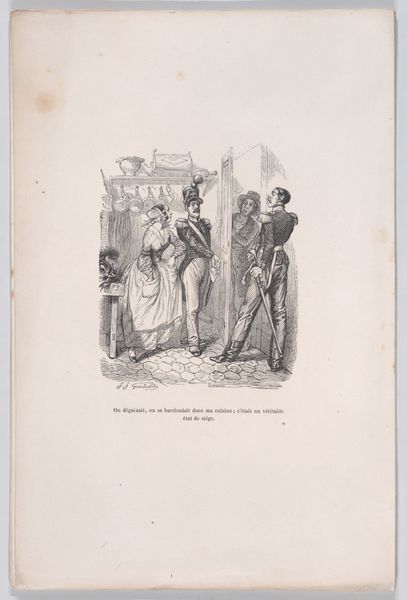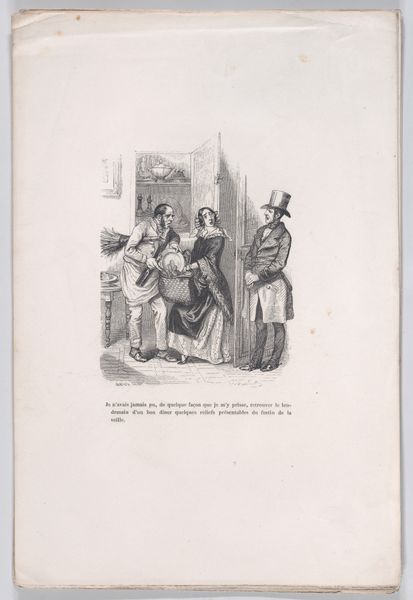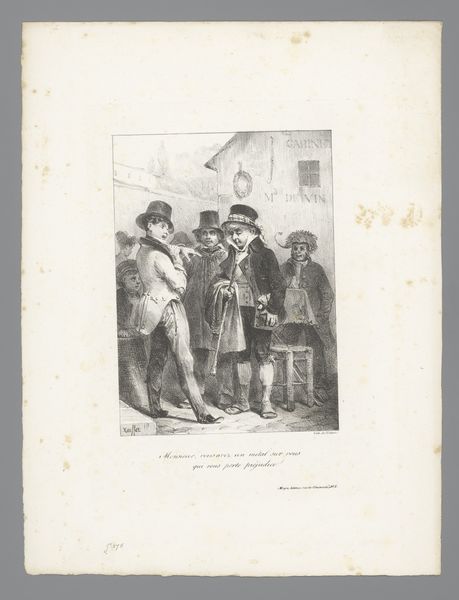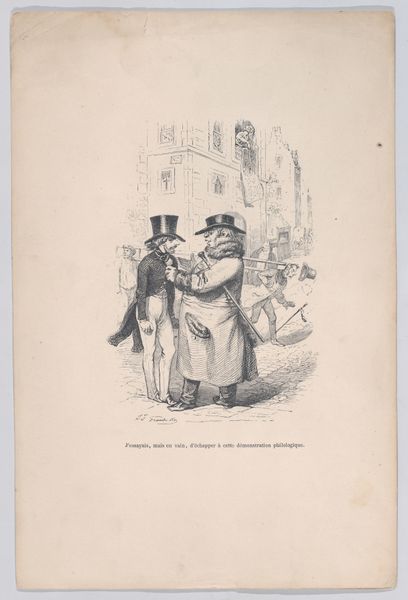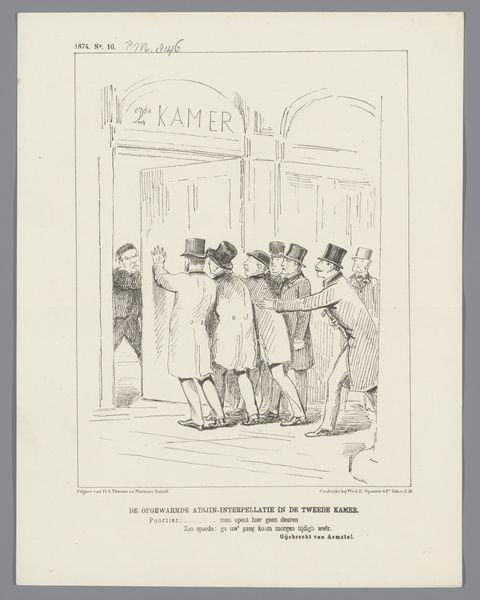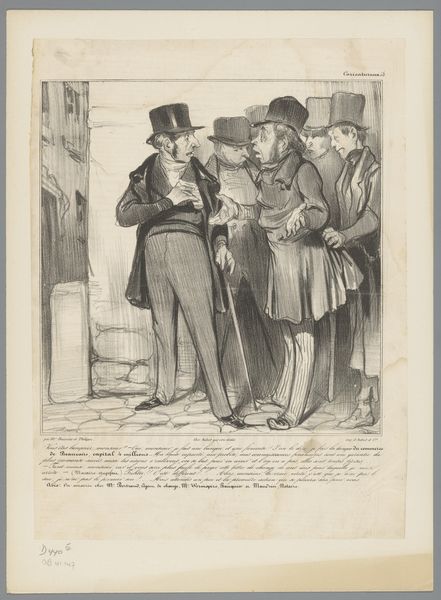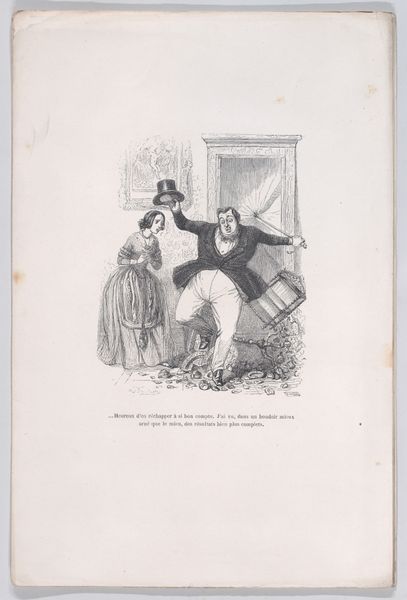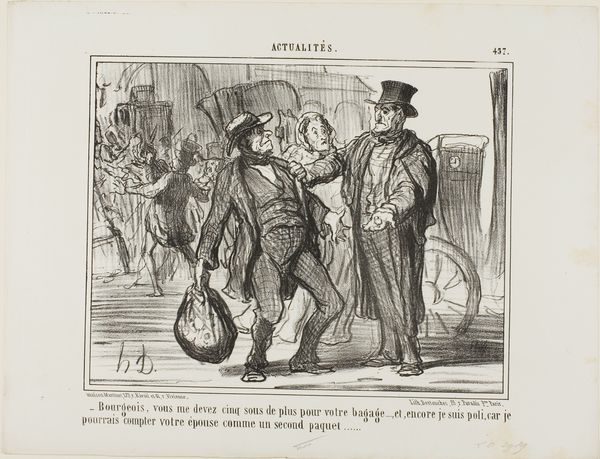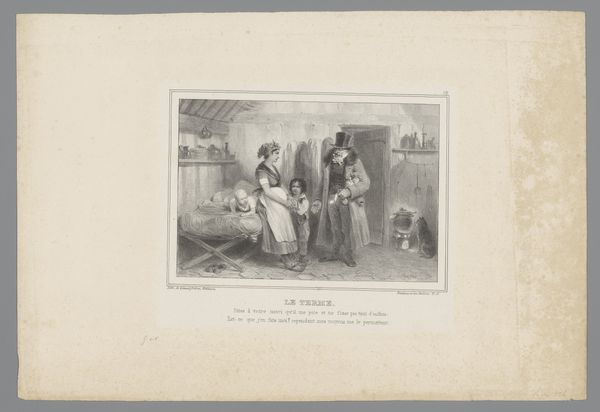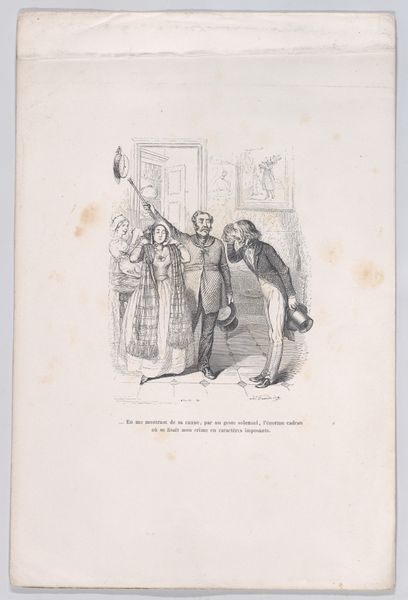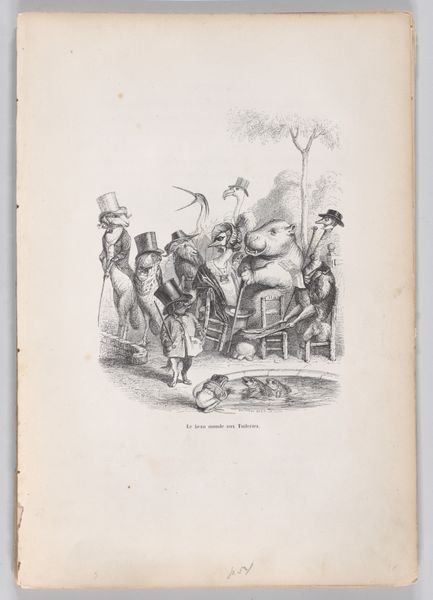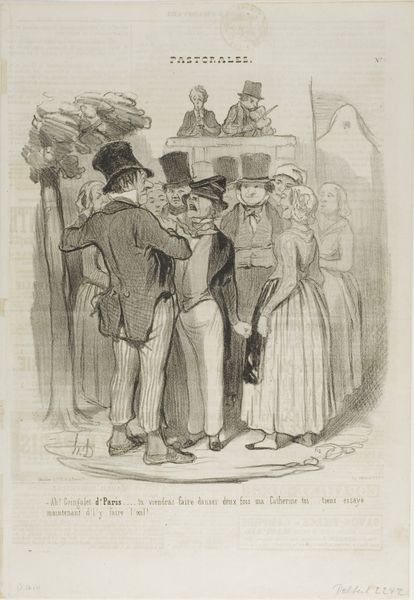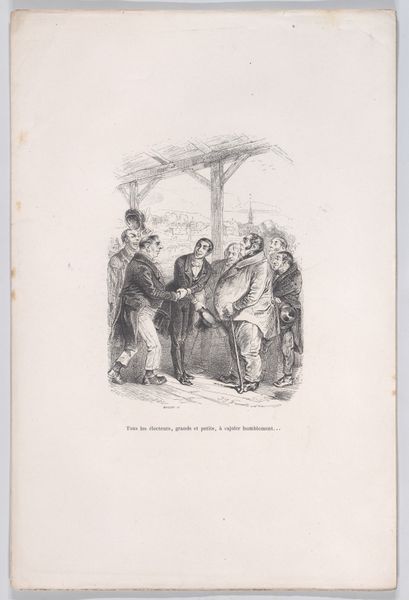
"He was only waiting to make fun of the pursuer and the pursuit" from the Little Miseries of Human Life 1843
0:00
0:00
drawing, print, graphite, pen
#
drawing
# print
#
caricature
#
romanticism
#
men
#
graphite
#
pen
#
genre-painting
Dimensions: Sheet: 11 1/4 × 7 1/2 in. (28.5 × 19 cm)
Copyright: Public Domain
Curator: We’re looking at a drawing by J. J. Grandville titled "He was only waiting to make fun of the pursuer and the pursuit" created in 1843. It's currently held at the Metropolitan Museum of Art. Editor: It has this anticipatory stillness, doesn't it? A group poised, like a coiled spring about to release a burst of shared laughter, a very tactile rendering of malice about to be made manifest. Curator: The materials used, pen, graphite and print, amplify the Romantic style evident in Grandville's emphasis on emotional impact. It has that typical mid-19th-century interest in illustrating the human condition and a biting social satire that characterized much of his work. Editor: I think it’s intriguing how the relatively simple production – graphite, pen, easily reproducible printmaking—belies the complexity of the scene and the implied power dynamics. One can imagine its circulation, impacting a growing reading audience hungry for social critique. Curator: Indeed. Grandville was a master of symbolism, imbuing his figures with layers of meaning. Notice how the arrangement, especially the placement near a doorway, heightens that sense of performance, an emotional claustrophobia that makes mockery the only means to escape. Editor: The etching-like quality feels particularly relevant to this theme; this meticulous process contrasts brilliantly with the crude, instantaneous action they plan to enact, mocking its lack of substance, which could represent a fleeting sense of power derived from another's failure. Curator: Exactly. The image also evokes a sense of cultural memory. This scene of power preying on weakness recurs through literature and the visual arts, becoming a universal image of human relations reduced to the absurd. Editor: Considering that reproductive technologies expanded rapidly then, images such as these became crucial artifacts in defining cultural sensitivities about justice. This engraving captures the social process by which communities establish norms through judgment and scorn. Curator: The echoes of power structures in that print—from the political arena to the individual’s daily struggles—continue resonating today, perhaps because our methods of persecution evolved yet their inherent core remains mostly the same. Editor: So, as we observe the artistry with which this moment has been fixed onto paper, maybe what's more resonant is that production never stops circulating within networks of power and exploitation.
Comments
No comments
Be the first to comment and join the conversation on the ultimate creative platform.
